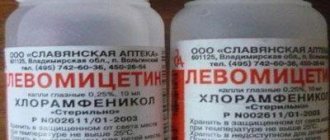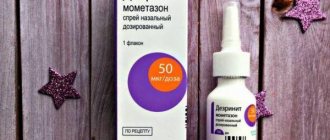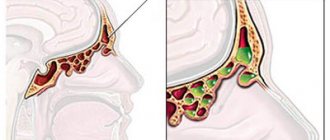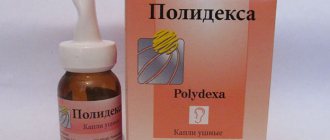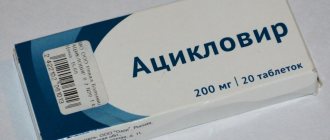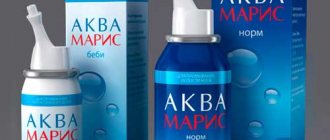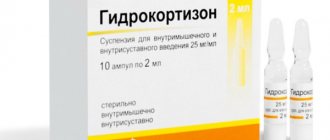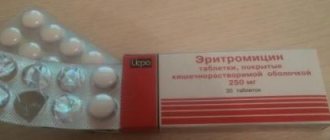Description of the drug
"Levomycetin alcohol" refers to broad-spectrum antibiotics. The active components of the product have a destructive effect on the cellular structures of bacteria, which leads to their death and, accordingly, a reduction in the number of pathogens in areas of inflammation. The pronounced antimicrobial effect of the drug is due to its chemical composition, which includes:
- chloramphenicol is an antibacterial substance that has a pronounced bacteriostatic effect against strains of gram-positive and gram-negative microorganisms;
- ethanol is a colorless liquid (ethyl alcohol) that has a disinfecting and drying effect;
- salicylic acid is an antiseptic with keratolytic and local irritating action, which helps accelerate cellular metabolism.
Do not use a concentrated alcohol solution for instillation into the ears. This can cause burns to the tissues of the ear canal and eardrum.
According to most experts, instilling undiluted chloramphenicol into the ears is dangerous, which is due to the high concentration of the alcohol component in the drug. Before use, the medicine should be diluted with boiled water or purchased at the pharmacy special ear drops, which contain an alcohol solution.
Mechanism of action
The principle of action of the alcohol solution is based on the ability to inhibit the biosynthesis of proteins in bacterial cells, which is possible due to the interaction of the components of the drug with ribosomal
subunits. The synthetic antibiotic included in the drug is active against most strains of bacteria resistant to tetracyclines, sulfonamides, penicillins, etc.
The selective effect of the drug is based on the ability to quickly detect cells of pathogenic microorganisms and destroy their structures. In the case of external use, the absorption of the antibiotic into the systemic circulation is minimal. But even after a single use, the medicine has a pronounced bacteriostatic effect for at least 6-7 hours.
Important! "Levomycetin alcohol" can cause adverse reactions in case of overdose. Before using the drug, you should consult an otolaryngologist.
Treatment for adults
It should be noted right away that antibiotics can only be used if bacterial infections develop in the organ of hearing: purulent otitis media, furunculosis, mastoiditis, etc. It is strictly not recommended to use the medicine without an accurate diagnosis and determination of the type of pathogens that provoked inflammation of the tissues in the mucous membranes of the ear. In the presence of purulent processes, the medicine is often used as ear drops.
How should you instill "Levomycetin alcohol" into the ear?
- dilute the drug with boiled water in a 1:1 ratio;
- heat the solution to a temperature of 36-37 degrees;
- drop 2-3 drops of the product into the sore ear;
- cover the ear canal with clean dry cotton wool for 1-2 hours;
- Perform the procedure no more than 2 times a day for a week.
Before using the medicine, you need to make sure that the eardrum is intact. It is strictly not recommended to instill even weakly concentrated solutions in the presence of perforated holes in the membrane. With abundant formation of purulent masses, the frequency of instillation can be increased to 3-4 times a day.
Otorrhea is a direct contraindication to the use of alcohol formulations. Suppuration indicates the transition of otitis media to the perforative stage. If "Levomycetin alcohol" gets into the middle ear cavity, partial or complete hearing loss cannot be ruled out. A burn to the mucous membrane of the ear cavity and auditory receptors can cause their irreversible dysfunction.
Terms of use
For many years, the medicine was dropped into the ears and covered with cotton to create dry heat. But often after this method of performing the procedure, complications were noticeable: patients experienced a burn in the ear canal area, and complete loss of hearing was also often observed. In this regard, the process of instilling Levomycetin into the ears was completely revised.
Currently, one of two options is used:
- The use of alcohol turunda. Levomycetin alcohol is diluted in warm water in a ratio of 1:1. The solution should be brought to a temperature of 35–37 degrees. Then cotton wool soaked in the resulting composition is inserted into the children’s ear for 20–30 minutes, this is quite enough to produce a clinical effect and not enough to cause thermal damage.
- Using a compress. The solution is also diluted with warm water, then gauze is moistened in it and placed around the patient’s ear. To achieve a thermal effect, cotton wool is placed on top and secured with a bandage. Apply the compress for a maximum of 3 hours; after removing it, the skin around the ear is treated with baby cream.
In general, the procedure is carried out 2–4 times a day, but the duration of the course should be no more than 5–7 days.
Not all types of otitis media can be treated with a thermal effect, so before using it, you should consult a specialist. It is also necessary to remember that in an undiluted state, Levomycetin alcohol should never be dripped into the ear.
Treatment of children
Not so long ago, in otolaryngology, it was allowed to instill antibiotics into the ears of children in the presence of purulent inflammation. But today experts prohibit such use of alcohol tinctures in pediatric therapy. Even a medicine diluted with water can cause severe burns to the mucous membranes of the hearing organ, which can lead to the development of hearing loss or deafness.
In pediatrics, it is recommended to use “Levomycetin alcohol” as follows:
- mix the drug with water in equal parts;
- Roll thick turundas from sterile cotton wool;
- moisten the turundas in a diluted alcohol composition;
- Insert cotton swabs into ears for 20 minutes.
Important! You should not leave cotton pads in the ear canal overnight, as this may cause a burn.
The procedure can be performed no more than 3 times a day for a week. If there is no positive dynamics of treatment, you should seek help from an otolaryngologist.
Read also: First day without alcohol
Instructions for use
The composition should not be used to treat inflammation and relieve pain before consulting with your doctor.
Only an otolaryngologist, after an examination, will be able to determine the exact location of the inflammation and help select a composition with the optimal effect. Attention! If the eardrum is perforated, the introduction of an alcohol composition of any concentration, regardless of the method, is prohibited. . Before using the product, preparatory manipulations are carried out: the medicine is diluted with purified, boiled water in a 1:1 ratio and the composition is heated to a temperature of 37 degrees
Before using the product, preparatory manipulations are carried out: the medicine is diluted with purified, boiled water in a 1:1 ratio and the composition is heated to a temperature of 37 degrees.
If the treatment is carried out at home, and the effectiveness is not observed after 3 days, you should consult a doctor. This situation threatens the development of complications.
For adults
Only a 3% solution can be used for medicinal purposes. In the absence of contraindications, the drug as drops can be used to treat otitis media in adults. The solution is injected into the patient's ear 2-3 times a day, 1-2 drops. It is worth paying attention to the fact that the alcohol solution is injected only into the affected ear.
Treatment may also involve the introduction of turunda with the composition. In this case, small cotton wool formations are moistened in a solution of alcohol and water, prepared in a 1:1 ratio. Soaked cotton wool is inserted into the ear canal once a day, immediately before bedtime for 10 minutes. The affected ear is insulated at night.
It is prohibited to drip the composition into the ear of a child under 10 years of age. This is due to the fact that the epithelial layers and mucous membranes at this age are extremely sensitive. There is a possibility of developing irritation. In this case, the child will complain of increasing pain and burning.
For children over 3 years of age, the drug can be administered using turunda. The prepared mixture is moistened with cotton wool and inserted into the ear canal for 5-10 minutes; after removal, the affected ear is insulated.
Alcohol compress
Heat treatment is recommended only at the stage of resolution of purulent processes in the mucous and bone tissues of the hearing organ. Warming the ear at the stage of formation of ulcers can cause the spread of bacteria inside the ear, which can lead to the development of mastoiditis, labyrinthitis, meningitis, etc.
To prepare a compress, you must do the following:
- dilute the antibiotic with water in a 1:1 ratio;
- fold a piece of gauze into 4 layers and make a hole in it for the auricle;
- moisten a gauze pad in the prepared solution;
- apply a napkin to the area behind the ear;
- put down parchment, polyethylene and a layer of cotton wool;
- secure the compress with bandages.
The duration of the entire procedure should not exceed 3 hours. After removing the compress, the skin behind the ear should be wiped dry and lubricated with baby cream.
Instillation of ears with Levomycetin alcohol in adults
You should not begin therapeutic actions or try to cope with the pain syndrome before consulting a doctor. Only an otolaryngologist is able to accurately identify the type of otitis media, how advanced the disease is, and also prescribe the necessary therapy. It is prohibited to administer alcohol-based medications into the ear canal if the patient has a perforation in the eardrum.
In addition, it is worth noting that the use of this antibacterial agent is permitted only if a bacterial disease of infectious etiology develops in the ear: purulent inflammation of the hearing organs, furunculosis, mastoiditis, etc.
The use of the medication is strictly prohibited unless a precise diagnosis has been established and the type of pathogenic microorganisms that have caused the formation of an inflammatory process in the ear mucosa has not been determined. If a purulent process is detected, Levomycetin alcohol is often prescribed as ear drops.
Instillation of this antibiotic into the ears should be done as follows:
- add boiled water to the alcohol solution in equal proportions;
- heat the resulting mixture to 36-37 degrees;
- drip the medicine into the affected organ of hearing in the amount of 2-3 drops;
- Close the ear canal with a clean cotton swab and leave for a couple of hours.
The frequency of the procedure is maximum twice a day for 7 days.
Before you start using the drug, you need to make sure that the eardrum is not damaged. It is strictly prohibited to instill medicine with even a weak concentration in case of perforation in the eardrum. If abundant purulent formation is detected, the solution must be instilled more often - about 3-4 times a day.
The presence of otorrhea is a direct contraindication to the use of alcohol-based medications for instillation. If there is a leakage of purulent secretion from the ear canal, this indicates the transition of ear inflammation to the degree of perforation.
If Levomycetin alcohol penetrates into the middle ear, there is a risk of developing partial or complete deafness. If the mucous membranes of the ear and auditory endings are burned, there is a possibility that the dysfunction will become irreversible.
In addition to instillation, Levomycetin alcohol can be used to apply compresses to the sore ear. But it is immediately worth noting that heat therapy for otitis is allowed only in the absence of a purulent process in the mucous and bone tissue of the hearing aid.
If you warm the ear at the stage of formation of pustules, there is a possibility that bacteria will spread to the inner parts of the ear, which can cause mastoiditis, labyrinthitis, meningitis and other complications.
To warm the ear with a compress, proceed as follows:
- add to water in equal proportions;
- take gauze folded in 4 layers, make a slot in it for the auricle;
- moisten the gauze with the prepared solution;
- apply a gauze pad to the affected organ of hearing, inserting the auricle into the slot;
- Cover the gauze with parchment, polyethylene and a layer of cotton wool on top;
- secure the compress with bandages or a scarf.
The compress should be kept for a maximum of 3 hours. Upon completion of the procedure, the skin behind the ear should be wiped dry and treated with baby cream.
Overdose
In 90% of cases, “Levomycetin alcohol” is well tolerated by both adults and children. In rare cases, a negative reaction of the body to the action of a synthetic antibiotic is possible. In isolated cases, allergic reactions were observed, the manifestations of which were:
- Quincke's edema;
- hives;
- severe itching;
- erythematous spots.
In case of prolonged use of the drug, disturbances in the hematopoietic system are possible.
In rare cases, patients showed signs of developing erythropenia, aplastic anemia, thrombocytopenia, etc. If side effects occur, stop using the medicine and consult a doctor. To prevent the development of systemic diseases, during the use of an alcohol solution, it is advisable to monitor the blood picture, periodically submitting it for biochemical analysis.
Contraindications and side effects
According to the instructions for use, chloramphenicol should not be used in the following cases:
- increased sensitivity to the main and auxiliary substances of the antibiotic;
- severe pathologies of internal organs, renal or liver failure;
- dermatological diseases (fungal infections, eczema, psoriasis, pustular rashes) and conditions accompanied by microcracks and other injuries to the skin;
- pregnancy and breastfeeding;
- age up to 1 year.
Alcohol and aqueous solutions of chloramphenicol should be used with caution in people prone to developing food and drug intolerance, since the substance often causes severe allergic reactions, including Quincke's edema. Side effects of chloramphenicol may also include a feeling of dryness and irritation due to the ethanol included in its composition. If swelling, skin rashes, itching and other unpleasant symptoms appear, you must immediately stop antibiotic treatment, take an antihistamine and consult a doctor.
Since the active component of the antibiotic, even when applied locally, penetrates into the general bloodstream in small quantities, it is not allowed to exceed the therapeutic dose during treatment in order to prevent the development of systemic reactions.
Contraindications
Like most antibacterial drugs, Levomycetin alcohol has a number of contraindications. Otolaryngologists do not recommend using the product if you have the following diseases:
- psoriasis;
- blood diseases;
- kidney dysfunction;
- eczema;
- fungal infections;
- wounds in the ear canal;
- perforation of the eardrum.
Important! The drug should not be used in the treatment of children under 12 years of age, due to the ototoxic effect of the antibacterial components of the alcohol solution.
Experts warn that abuse of the drug may cause a decrease in local immunity. In this regard, patients often develop otomycosis, i.e. fungal infection of the external auditory canal.
Indications and contraindications
Levomycetin alcohol began to be used in the last century. The drug has become firmly established in the treatment of dozens of diseases. It is actively used not only for local treatment of otitis media, but also for minor, shallow burns, acne, and for the prevention of bedsores. Before use, be sure to consult your doctor.
Like any other pharmaceutical medication, chloramphenicol has not only indications, but also contraindications. Before starting therapy, be sure to consult your doctor. You should tell in detail about previous diseases, especially allergic ones. Remember that the use of chloramphenicol alcohol is prohibited when:
- any type of eczema;
- psoriatic skin lesions (psoriasis);
- fungal pathologies;
- individual intolerance to the components of the drug.
Composition, indications and contraindications, features of use for various diseases
Greetings, dear friends. If you are looking for an inexpensive but quite effective remedy for getting rid of many diseases, then pay attention to chloramphenicol; instructions for use and features of use will be given in our article today.
This drug is sold through pharmacy chains. Used externally and has antibacterial and anti-inflammatory properties. In medicine, if necessary, it is used to treat shallow wounds, cuts and burns. Levomycetin alcohol is recommended for use in the ear for otitis media. An inexpensive remedy for various infectious diseases will help.
What does the drug consist of?
You can buy chloramphenicol alcohol in the form of a solution with a yellowish tint or without color. When used, there is a smell of medical alcohol. This drug consists of two ingredients - 70 percent ethyl alcohol and chloramphenicol or chloramphenicol.
At the pharmacy kiosk you can buy analogues of this product with the same active ingredients - Levomycetin and Syntomycin ointments, as well as Levomycetin liniment. Let's talk more about the indications for use now.
When to use the product
The use of a three percent solution of chloramphenicol is recommended in a hospital setting and at home. The drug comes with instructions, according to which the main indications are:
- chiria and boils;
- burns;
- infected wounds;
- bacterial skin diseases;
- trophic ulcers.
Experienced doctors advise, taking into account the positive characteristics of the drug, to use it if necessary to disinfect:
- skin in the presence of acne or pimples;
- the master’s hands and tools before performing a pedicure or manicure;
- newborn's navel.
Otolaryngologists allow treatment of ear inflammation with an alcohol solution of chloramphenicol. The drug is successfully used in children as well as adults. The product allows you to slow down the growth and development of pathogenic bacteria, relieve pain and relieve the inflammatory process.
Methods of use
Reviews from patients using the drug are mostly positive. About 30% of people note a reduction in inflammatory processes when using chloramphenicol for the face. In medicine, this drug is used for various purposes. It depends on the course and type of the disease.
For acne and pimples
Pimples and acne are dermatological diseases that occur when the skin produces excessive sebum. As a result, sebaceous plugs clog the pores and do not allow oxygen to penetrate them. Pathogenic bacteria are activated and begin to actively multiply.
Using an alcohol solution of chloramphenicol will allow:
- stop the inflammatory process;
- relieve irritation;
- reduce the activity of pathogenic microorganisms;
- dissolve the sebaceous plug.
It is not difficult to use the medicine in the fight against imperfections on the face. Using a cotton pad, distribute the composition over the skin. If the cover is dry, then it is advisable to use it pointwise. After holding for a while, quickly rinse with warm running water. Treat problem areas with a rich, nourishing cream.
Professional cosmetologists advise making your own mash. The classic version uses the following ingredients:
- three percent alcohol solution of chloramphenicol - 30 milliliters;
- camphor alcohol - 80 milliliters;
- salicylic acid - 30 milliliters;
- Streptocide - 10 tablets..
Read also: Strong alcohol at what age
The liquid ingredients are mixed well and crushed tablets are added to them. As a result, a solution with a precipitate is formed. Before each use, mix it and apply a small amount to a cotton pad. Next, the skin is wiped and after a while you need to wash with running warm water.
There is a second option for preparing mash. It will require:
- one tablet of Levomecithin;
- salicylic acid - 5 milliliters;
- 100 milliliters of boric acid.
The Levomycetin tablet is ground to a powdery state and mixed with salicylic and boric acid. After this, the resulting solution is distributed pointwise over problem areas of the cleansed face. Then a nourishing cream suitable for your skin type is used.
An alcohol solution of chloramphenicol can be addictive, and it also dries out the skin greatly. Taking this into account, it is better to use the above remedies in a course of two weeks, and take weekly breaks between them.
For ear inflammation
Otitis is a disease that affects the inner, middle or outer ear. Patients experience throbbing pain in the ear canal. Sometimes a bacterial infection is added to the inflammatory process, resulting in a purulent process.
Therapy is carried out using a three percent solution of chloramphenicol. The medicine is warmed up in advance in the bottle and instilled. Adults take 4 drops, and patients over one year old need three drops for each ear.
Excess drug that flows from the auricle is removed with a cotton pad or swab. The procedure is carried out daily until complete recovery. The medicine is instilled 4 times a day.
From prickly heat
An alcohol solution of chloramphenicol has proven itself in the fight against prickly heat. It is used at any stage of the disease. To do this, soak a cotton swab or disk in the medicine and wash it off after a while. The skin is lubricated with a nourishing cream. A quick result can be obtained when used once a day for children under one year old, 2 times a day for older children and 3 times for adults.
When not to use
Contraindications to the use of the drug are:
- skin diseases - psoriasis, eczema or fungus;
- liver and kidney pathologies;
- violation of bone marrow circulation;
- carrying out therapy using cytostatic drugs;
- individual intolerance.
During pregnancy, the drug is used under strict medical supervision. The same applies to the use of the drug by children under one year of age.
An alcohol solution of chloramphenicol should be used with caution. Side effects often occur, such as swelling, itching, and an allergic reaction. It is better to consult an experienced dermatologist before starting use.
And we don't say goodbye. Give this material to your friends and acquaintances to read. Don't forget to subscribe for updates. See you soon.
Many people are interested in the question of whether it is possible to use chloramphenicol alcohol for otitis media. Any process of inflammation in the human body necessarily requires the appointment of effective treatment, accompanied by the use of antibiotics. The antibiotic can be for oral or external use. Most often, the doctor prescribes drugs in the form of injections or tablets. But there are a number of diseases where only external use of an antibiotic is necessary. Levomycetin alcohol for otitis media is such a drug.
Description and instructions for the drug Levomycetin alcohol
Levomycetin alcohol is a form of a well-known antibiotic that is intended for external use.
The active ingredient, chloramphenicol, can fight a wide variety of infections. Resistance of microorganisms to chloramphenicol develops quite slowly. They can be used to treat infections that are resistant to common antibiotics such as penicillin, streptomycin, and so on. An alcohol solution of Levomycetin is used for:
- Various purulent lesions of the skin and soft tissues;
- Burns;
- Trophic ulcers and skin cracks;
- Infectious lesions of the eyes;
They produce an alcohol solution of Levomycetin 1%, 3% and 5% for external use. Gauze napkins are soaked in it and placed on the infected skin. A bandage is applied on top. The instructions for the drug Levomycetin alcohol indicate that such dressings are repeated once a day or even less often.
In ophthalmology, only 0.25% and only on the recommendation of a doctor!
Levomycetin alcohol solution is contraindicated for:
- Psoriasis;
- Fungal infections;
- Eczema;
- Pregnancy and lactation;
- Treatment of newborns;
Side effects
If we talk specifically about the external use of the drug, it can cause irritation and allergies. If used correctly, there should be no adverse reactions from internal organs.
Composition of the drug, indications for use and contraindications
The solution has a wide spectrum of antimicrobial action. Levomycetin alcohol has an active effect on microbial cells and their structure. It helps to completely suppress the development of dangerous microbes. The main components of chloramphenicol are:
- antibiotic;
- salicylic acid;
- ethanol.
All these components, interacting with each other, give a positive therapeutic effect. The acid enhances the antiseptic, irritant, and keratolytic effects. Ethyl alcohol is the strongest component for high-quality effective disinfection. Only a doctor can prescribe this medication. Self-treatment will harm the body. The doctor prescribes "Levomycetin" in the presence of the following diseases:
- Minor burns, bedsores, ulcers, ulcers. It is recommended to apply the pharmaceutical solution onto a sterile cotton swab. After application, you should wipe the affected areas of the skin up to several times a day.
- Acne. To treat acne, it is recommended to very carefully apply lotions to the area where the rash is present. It is important not to dry out the skin. The best effect in the treatment of acne is obtained by adding Trichopolum tablets to the drug. The dosage is prescribed by the doctor after examining the patient.
- Otitis. Levomycetin alcohol is one of the components of ear drops. Such drops are prepared in pharmacies.
"Levomycetin" has a number of contraindications. The instructions for use contain all recommendations and a description of the drug. The product should not be used for diseases such as:
The drug is also not prescribed during pregnancy and lactation. Levomycetin is not prescribed to children under 12 years of age. It is imperative to consult a doctor before starting treatment. If treatment is carried out without supervision, it can cause harm to the body, since the components of the drug can cause allergic reactions in severe forms. Improper use of the product can lead to complete hearing loss.
Read also: Quickly relieve alcohol intoxication
If you lubricate lesions on the skin abundantly, angioedema or anaphylactic shock may occur. Based on this, it is advisable to be treated under the close attention of a doctor.
Treatment of otitis in a child
Symptoms of common otitis media include shooting pain in the ear and fever. However, the temperature does not rise in all cases. If the inflammatory process is severe, the eardrum bursts and purulent masses leak out of the ear. This disease is dangerous for everyone, but special attention should be paid to young children. Therefore, if a child has a fever for a long time, cries, and does not allow his ears to be touched, it is urgently necessary to consult an otolaryngologist. You should consult a doctor immediately, as otitis media leads to serious complications. The disease will not go away on its own.
After contacting a doctor, they will be diagnosed, since otitis media is of different types, and, accordingly, the treatment will be different. But it happens that sometimes it is impossible to see a doctor, and what to do in this case? As first aid, you can drip Otinum or Otipax drops. Levomycetin alcohol for otitis media is widely used in medical practice. But it is important to remember that Levomycetin should not be instilled into the ears. Instillation will cause a burn and the pain will not decrease, but will only increase. Alcohol should be placed in the ear while on the ear. Turunda is made by twisting cotton wool into a small rope. After the turunda is made, it must be moistened with alcohol and carefully placed in the ear. You should not warm the sore ear with all kinds of compresses, etc. Otitis media can occur as a complication or as a concomitant disease.
If a sick child has a runny nose, it is recommended to treat it together as well. Rinse your nose with Aquamaris and instill baby drops.
Reviews of Levomycetin alcohol
Basically, reviews of Levomycetin alcohol concern the two most common areas of application - in dermatology and otolaryngology.
Levomycetin alcohol for acne
This component is often mentioned when listing products that people use to fight acne, boils, and other types of infectious skin lesions. Indeed, Levomycetin alcohol, like other similar medications, can dry the skin and stop the purulent process.
But it is wrong to consider this drug a panacea, some special remedy for acne. Even those who praise Levomycetin alcohol use it in combination with other measures:
- — I apply Levomycetin alcohol pointwise to inflamed pimples. In parallel, masks with zinc, bodyaga, vitamins with zinc taken internally.
- — I don’t understand why they talk about Levomycetin alcohol as an independent remedy for acne! It's just alcohol and an antibiotic. And it is only suitable for destroying a specific infection in a specific area of the skin. And in order to establish the causes of the rashes, you need to take all the tests, check your hormones, digestion, cleanse yourself from the inside, and restore your health. Then the skin will be normal.
Instillation of Levomycetin alcohol into the ear of a child with otitis media
This tactic for treating otitis media was widely used several decades ago. Moreover, they instilled not only Levomycetin alcohol, but also boric, furatsilin and so on. Then the ear was covered with cotton wool and dry heat was provided. A more common option is to lightly moisten a cotton pad with the solution and insert it into the ear.
But such treatment has long been recognized as dangerous! Levomycetin alcohol (like any other) can cause burns and damage the eardrum.
Here's what doctors say about this:
- — Previously, we allowed the use of turundas, slightly moistened with alcohol solutions, as a means of first aid. But now we don’t even give these recommendations. If you have pain, you can instill Otipax, but then, as soon as possible, consult a doctor.
- — Forget about putting alcohol in your ears. This should not be done to anyone, especially children. Provide dry heat - compresses. There are several medications that relieve pain from otitis media. But, of course, the most important thing is to contact an ENT specialist, who will make an accurate diagnosis (there are many different types of otitis!) and prescribe the correct treatment.
conclusions
Levomycetin alcohol is a very affordable medicine - it’s good to have it in your home medicine cabinet in case of purulent inflammations on the skin. You can wipe the abrasion with it if there is a risk of infection.
Do not instill Levomycetin alcohol solution into your ears. Apply to pimples pointwise and only when there is obvious inflammation (beware of drying out the skin - this can cause no less problems than increased oiliness!).
How is otitis media treated in an adult?
The main methods of treating otitis in adults are medicinal and surgical. The development of such dangerous complications as hearing loss and mastoiditis depends on how timely otitis media is detected. Treatment is prescribed by a doctor, and what it will be depends on the form of the disease, the symptoms and whether there are any concomitant diseases. The effect will be better if therapy is prescribed as early as possible. In practice, treatment follows the following strategy:
- Reducing pain. To relieve pain, Paracetamol is prescribed. The dosage is selected by the doctor and depends on the patient’s body weight. Otipax drops also provide a good analgesic effect. A compress according to Tsitovich will help reduce pain. It is done as follows: it is recommended to soak a cotton swab in a 3% solution of boric acid and glycerin and place it in the ear canal. The compress should remain in the ear for no more than five hours.
- Reducing swelling. To reduce swelling, your doctor will usually prescribe nasal drops. In practice, drops “Navtizin” and “Nazivin” are used. Antihistamines such as Suprastin, Tavigil, and Claritin also help reduce swelling. Antihistamines are prescribed by a doctor only if otitis media is caused by an allergy.
- Suppression of infection with antibiotics. Treatment of otitis media is always accompanied by the prescription of antibiotics. Amoxicillin is usually used in medicine. If this drug is contraindicated or does not give the desired effect, then macloride antibiotics, such as Rulid and Spiramycin, are prescribed. If the form of otitis is complex, then Sparflo or Avelox is prescribed. Levomycetin can be used externally on turunda.
Otitis in an adult is treated for at least ten days. In no case should you stop taking antibiotics, even if the condition has improved, as this will lead to the development of a recurrence of the disease and contribute to the development of hearing loss. Sometimes, for otitis media, an adult is prescribed a compress with salt. But if after the compress the pain intensifies, it can no longer be used. It is recommended to always clean the ear canal of pus. During cleaning, the ear should be pulled back and the ear should be carefully cleaned with a cotton swab dipped in hydrogen peroxide. If local treatment does not give any result, then a surgical method of treating the disease is used. The doctor performs a bypass surgery of the tympanic cavity. If after this there is no improvement in the patient’s condition, then the doctor performs paracentesis. Paracentesis is an operation during which the eardrum is cut. Other methods of treating this disease are physiotherapy:
- UHF nasal cavity;
- laser therapy;
- pneumomassage.
It is very important to understand that otitis media is not a runny nose, and this disease will not go away on its own. Therefore, as soon as the first symptoms of otitis media are observed - severe pain in the ears and fever, it is recommended to immediately consult an ENT specialist. Otherwise, if treatment is not prescribed in a timely manner, serious complications will arise that will lead to complete hearing loss. Particular attention must be paid to the treatment of otitis media in newborns.
Is it possible to drip Levomycetin into the ear and how to do it correctly
source
Levomycetin in the ear is used for various diseases that are bacterial in nature and associated with ear pain, severe inflammation, congestion and other unpleasant symptoms.
The medicine is an antibiotic and has an anti-inflammatory effect. This complex influence leads to a positive effect.
And despite the fact that the medication is aimed at treating the eyes, it is effective as a treatment for various forms of otitis.
In the case of otolaryngological diseases, it is more reasonable to use Levomycetin alcohol solution in the ears, but it should only be prescribed by a specialist, since incorrect therapy can lead to negative consequences.
The antibacterial component of Levomycetin is Chloramphenicol, which is highly effective. The solution has a destructive effect on staphylococci, streptococci, and enterococci. It also has an adverse effect on gram-negative bacteria.
Treating ear ailments with this medicine alone is not enough, because complex treatment will be required. In the case when a doctor prescribed Levomycetin drops in the ears for a purulent disease, it will be only one remedy from the component regimen.
Indications
Levomycetin kills various microorganisms and bacteria. Therefore, it is prescribed when otitis is provoked by these irritants.
Antibiotics are prescribed by a doctor in the following cases:
- purulent pathology;
- bilateral hearing loss;
- external otitis;
- the presence of associated diseases;
- catarrhal otitis in children under one year of age;
- injuries, surgical interventions of the middle ear.
Levomycetin eye drops overcome protein synthesis of bacteria. As a result, they lose their reproductive activity. The product does not affect acid-fast, protozoan organisms, Pseudomonas aeruginosa.
In addition to the positive effect on the pathogen, the alcohol solution reduces the intensity of the inflammatory process and exhibits a disinfectant and analgesic effect.
Contraindications
- individual intolerance to one of the constituent components;
- pregnancy and breastfeeding;
- dysfunction of the liver, kidneys, as well as severe diseases of internal organs;
- in case of radiation treatment, the drug is used with caution;
- children under one year of age;
- dermatological disorders (psoriasis, eczema, fungal lesions, purulent rash) associated with microcracks or other skin injuries; the solution dries and can cause burns.
For skin inflammation, the drug leads to burning and itching. In this case, the drug should be discontinued. If there are abrasions in the affected area, an allergic reaction may occur, which is very difficult to eliminate on your own at home.
If a person decides to spontaneously use Levomycetin, it is necessary to read the instructions for use that come with the drug. And only a 3% solution of the medicine in the form of drops is allowed to be used.
The dosage for the treatment of otitis and recommendations for use are as follows:
- first you need to rid the ear of the existing pus; Here a cotton swab will help, which is dipped in hydrogen peroxide, pulling the shell a little upward and a little back, this position allows the medicine to better reach the affected area and clean the contents;
- Before instillation of the ear, Levomycetin should be slightly warmed;
- then tilt the person’s head to the side or he should lie down on one side;
- using a pipette, introduce 2-3 drops into the ear canal; then place a small piece of cotton wool to keep the heat in the sink;
- The patient should remain in this position for several minutes;
- do the same with the second ear.
The product is used 1-2 times a day, the course duration is no more than 5-7 days. It should only be injected into the painful ear. Under no circumstances should you drip as a preventive measure - this will only harm the organ. Levomycetin should not be used by a person with a perforated eardrum.
Improper execution of this manipulation can cause the development of a dangerous complication, i.e. an abscess formed as a result of deep penetration of pus and medication into the ear canal.
Otitis in a child
Drops are administered to children 1-2 times a day into the pathological organ, 2-3 drops. In case of severe discharge of pus, the dosage can be increased to 3-4 drops. It is recommended to use the solution at regular intervals to prevent overdose.
Unfortunately, children often suffer from side effects; the drug can cause pain and burning. In such cases, Levomycetin alcohol is not instilled directly, but using a cotton swab. Make small turundas from cotton wool, dip them in the solution, and insert them into the child’s ear for 15-20 minutes.
Do not warm your child’s ears with a blue lamp or apply compresses. This can cause the spread of the disease process and further complicate the situation. For more detailed information regarding the treatment of otitis media, you should carefully read the instructions for use of the medicine.
Side effects
If you drip Levomycetin into your ears as expected, then no negative effects should occur. But still, as a precaution, you need to follow the specialist’s instructions and not exceed the dose of the drug without his knowledge.
- peeling;
- allergies associated with skin rash;
- irritation, swelling of ear tissue;
- burning, itching;
- inflammation of the epidermis of the ear, hyperemia.
Due to any of the above symptoms that appear after instillation of the drug, you should stop using it and consult a doctor. Sometimes it is enough to reduce the dosage of the medication and the side effects are eliminated. In case of negative manifestations, symptomatic treatment is performed, the regimen of which is prescribed by an otolaryngologist.
It is worth remembering that Levomycetin alcohol for otitis media is most effective as part of a complex treatment. This remedy interacts favorably with other medications that help eliminate symptoms and speed up the recovery process.
